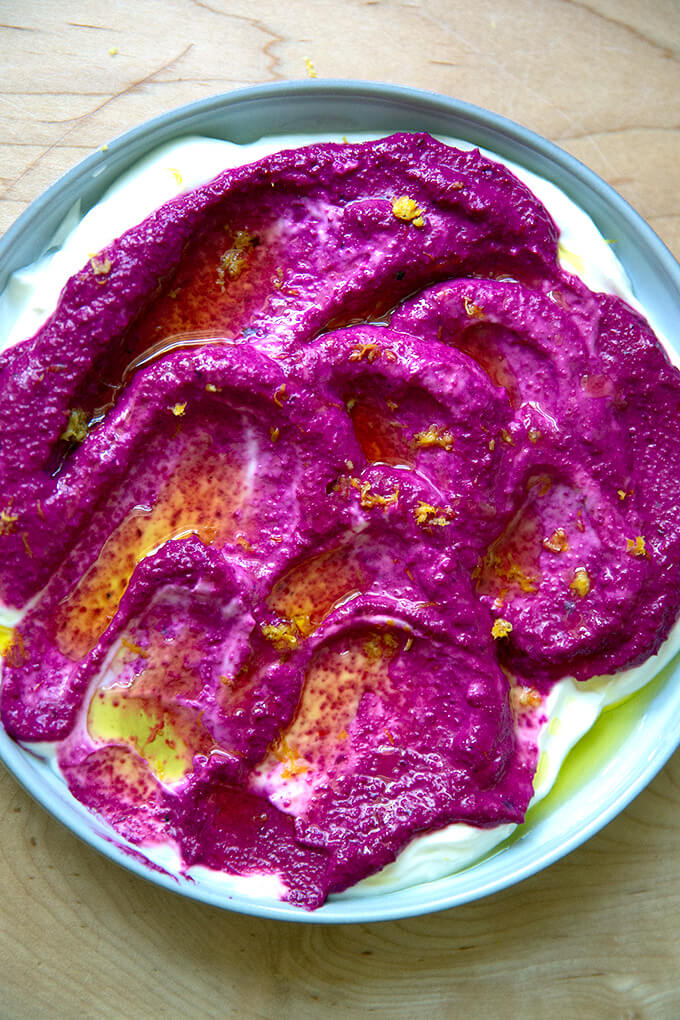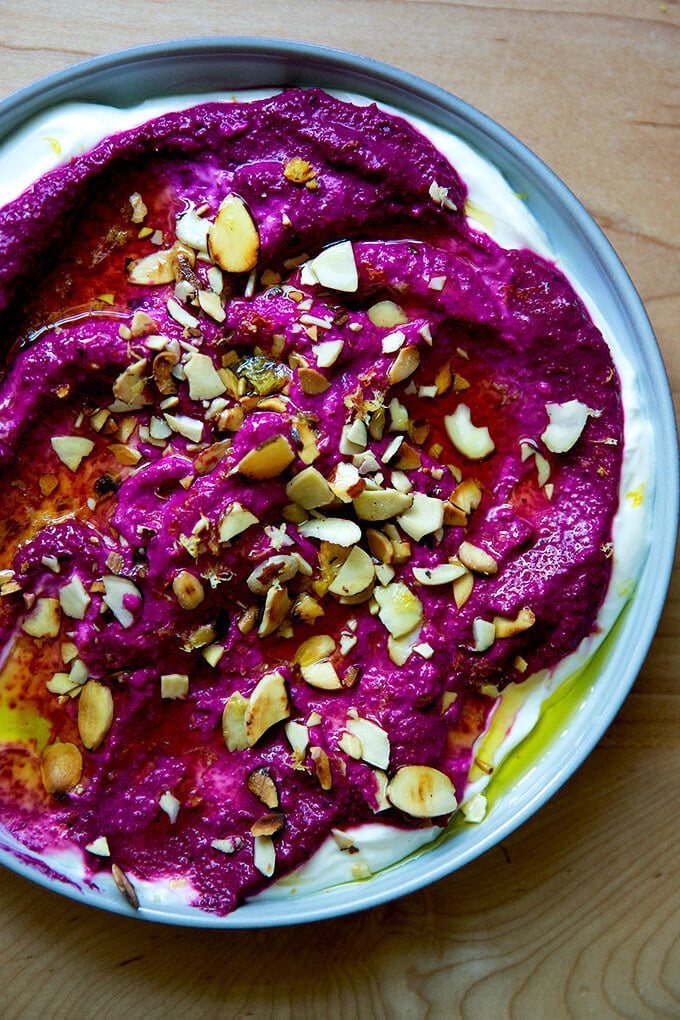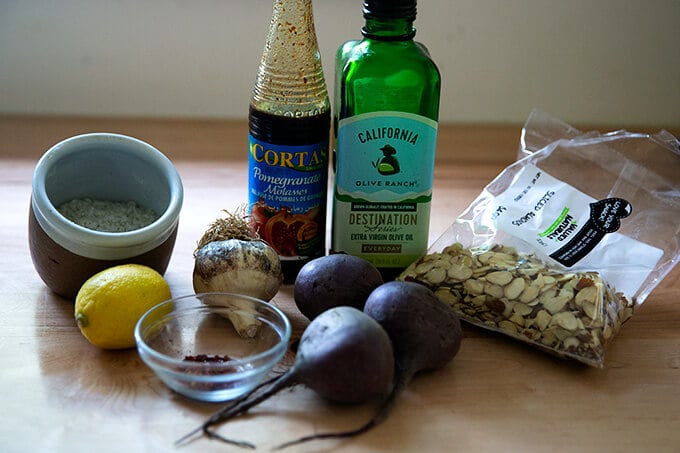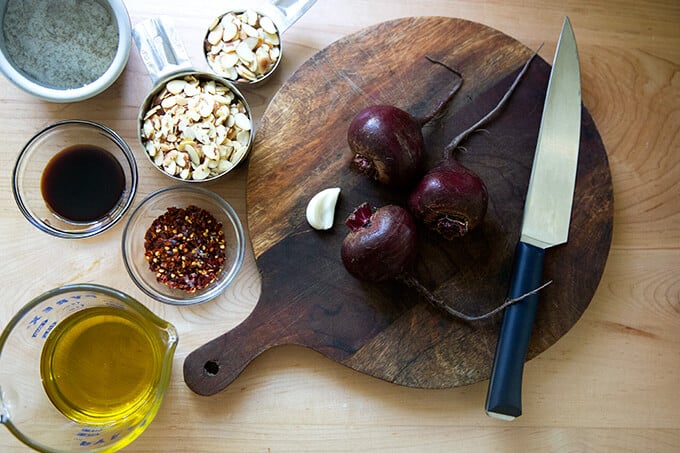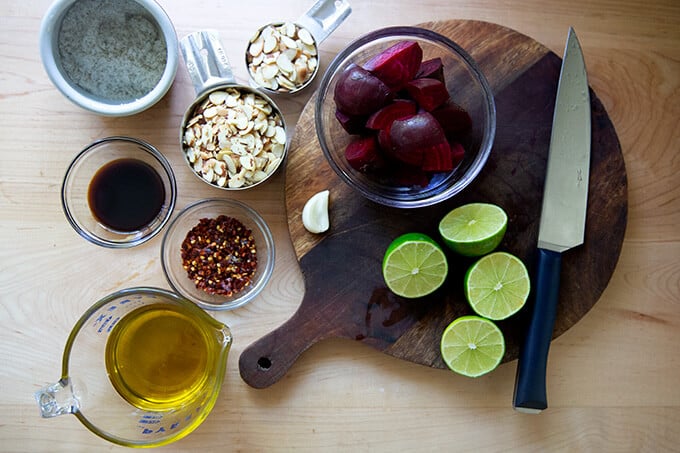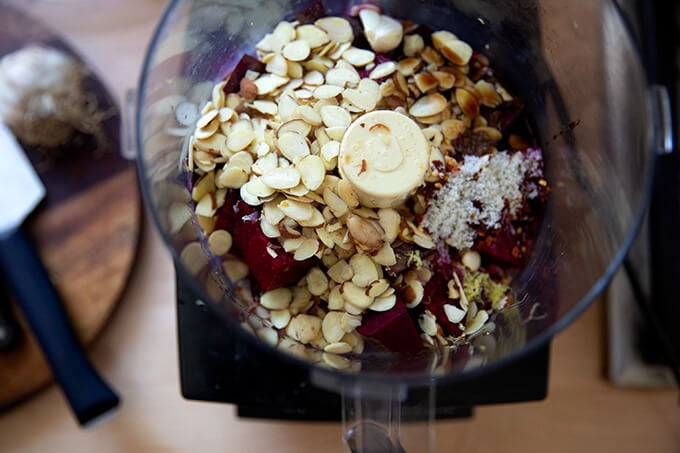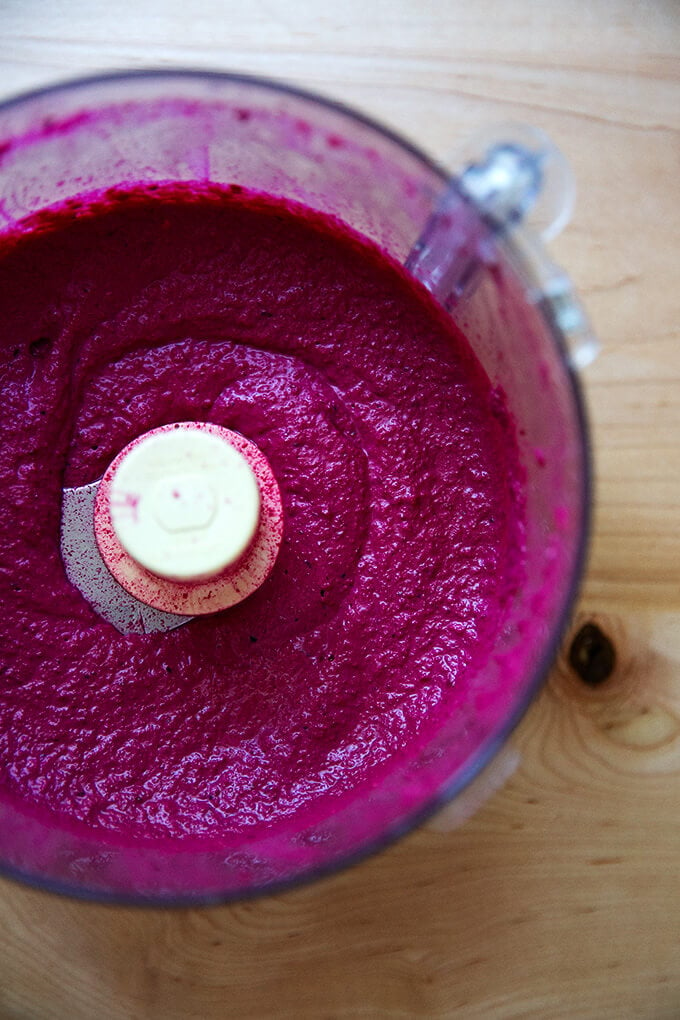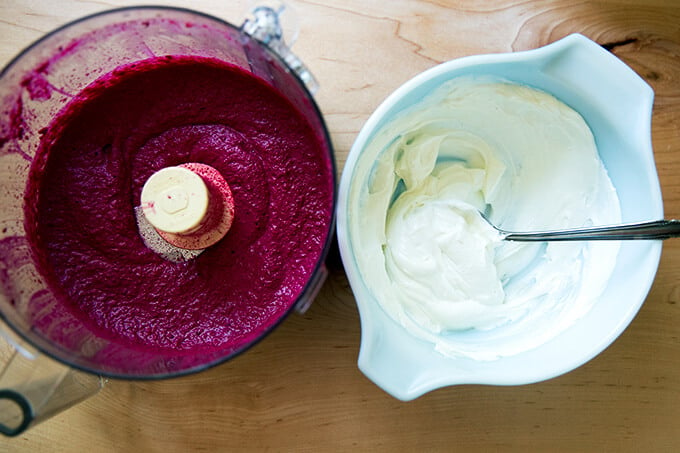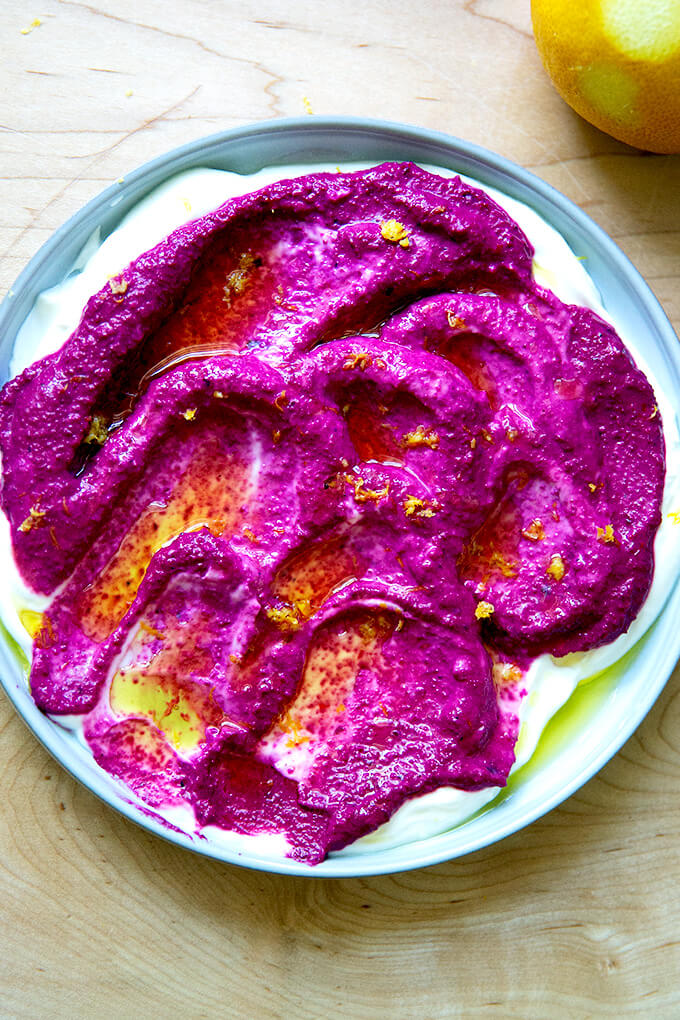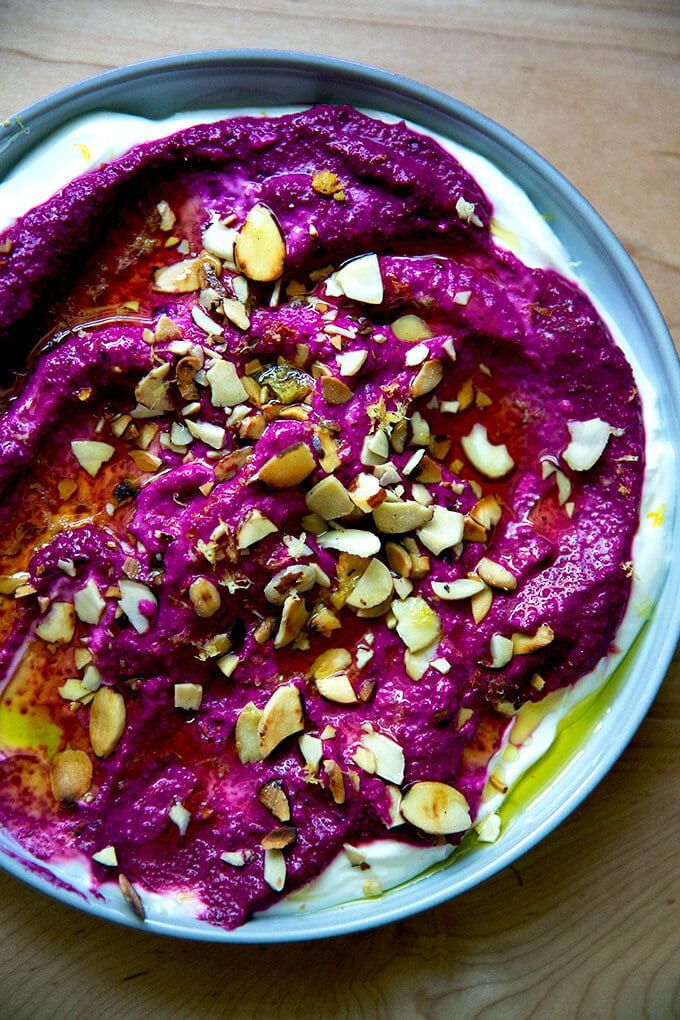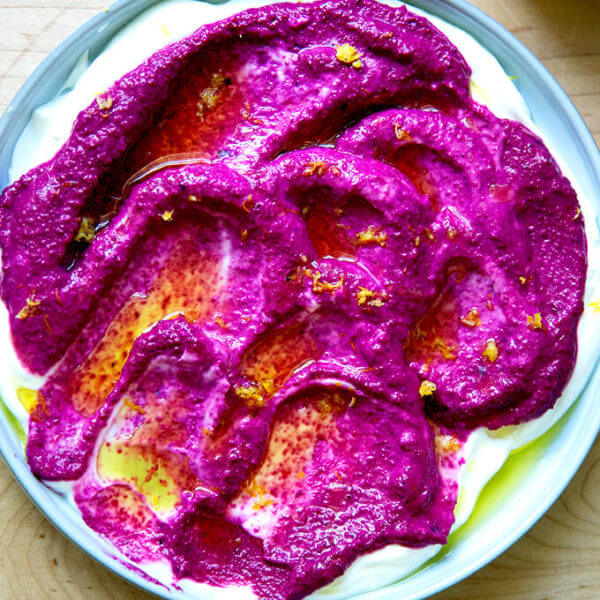Learning, for instance, I could shred raw beets in my food processor and toss them in a salad was as mind-blowing as discovering I could thinly slice Swiss chard and give it the kale salad treatment. But these revelations are especially welcomed at the height of the summer, when turning on the oven becomes less appealing with each degree the temperature rises. Last summer, one of you (thanks Peg!) sent me a link to this Tejal Rao recipe for a beet and walnut dip, which reminded me of this favorite beet-labneh dip from Washington D.C.’s Maydan, but whereas Maydan’s recipe calls for roasted beets, Tejal’s recipe calls for raw, uncooked beets. How. Nice. For the past two weeks, the beets from our CSA have landed in Tejal’s raw beet dip, and in addition to not cooking the beets, I haven’t been peeling them either. I know: rebel. Tejal got the recipe from the owners of Botanica, a vegetable-focused restaurant in Los Angeles. Its roots stem to muhammara, the Middle Eastern spread made from red peppers. It includes many classic raw dip flavorings — nuts, lemon, garlic, chile flakes, and olive oil — but it also includes pomegranate molasses, which offers both sweet and tart notes. As recommended, I’ve been spreading it atop Greek yogurt (or labneh), drizzling over a healthy amount of olive oil, grating fresh lemon over top, and finishing it with a generous garnish of crushed, toasted almonds. There is so much flavor going on in this dish I don’t know where to begin. On the one hand it’s very familiar: garlic, lemon, toasted nuts, and olive oil evoke many a dip from pesto to romesco. But the tangy pomegranate molasses in combination with the earthy beets pushes it into a category of its own. I find it irresistible. It has proven not only to be a delicious and striking appetizer — the color, truly is spectacular — but also a nice accompaniment to so many of my current favorite dishes: falafel burgers, homemade pita, and smoky grilled chicken. As suggested, I’ve been serving it with Persian cucumbers and pita, and in this lethargy-inducing heat wave, its bright, cooling flavors have been just the ticket. I hope it will be for you as well. PS: Another favorite, easy food processor spread: Black Olive Tapenade Here’s the play-by-play: Gather your ingredients. You’ll need to toast the almonds, trim the ends of the beets and roughly chop them, and juice some lemons or limes. Place all of the ingredients with the exception of the olive oil into a food processor or blender, and purée until smooth. Stream in the olive oil and continue blending until smooth. You likely won’t get it completely smooth, but a bit of texture in the purée is nice. On the left: beet dip. On the right: Greek yogurt seasoned with a pinch of salt. Spread the yogurt over a platter. Spread the beet dip on top. Drizzle olive oil over top. Shave lemon zest over top. Top with more toasted almonds. Be generous — the crunch is so nice. 5 from 9 reviews A few changes I’ve made:
I don’t peel the beets. I use almonds in place of the walnuts, only because I always have almonds on hand. I use Greek yogurt in place of labneh, again, only because I always have it on hand.
Pomegranate Molasses: I like the Cortas brand. Many grocery stores now carry pomegranate molasses, but you may want to call ahead before to make a visit to be sure. If you live locally, Nora’s in Albany carries the Cortas pomegranate molasses. Almonds or other nuts: I’ve been toasting 1.25 cups sliced almonds in a large dry skillet over medium to low heat until the nuts are evenly golden. 1 cup goes into the dip; 1/4 cup is used for garnish. You may want to toast more if you love almonds. Greek Yogurt: I love the Fage 5% Greek yogurt. I season it with 1/4 to 1/2 teaspoon kosher salt and beat it with a spoon to lighten its texture a bit before spreading it over the platter. Lemon: If you don’t want to waste the zest of the lemon you are juicing, zest it before juicing it, and set it aside. I prefer zesting the lemon right over the tip — I just find it easier — but I understand wanting to zest the lemon before juicing it for conservation purposes.
